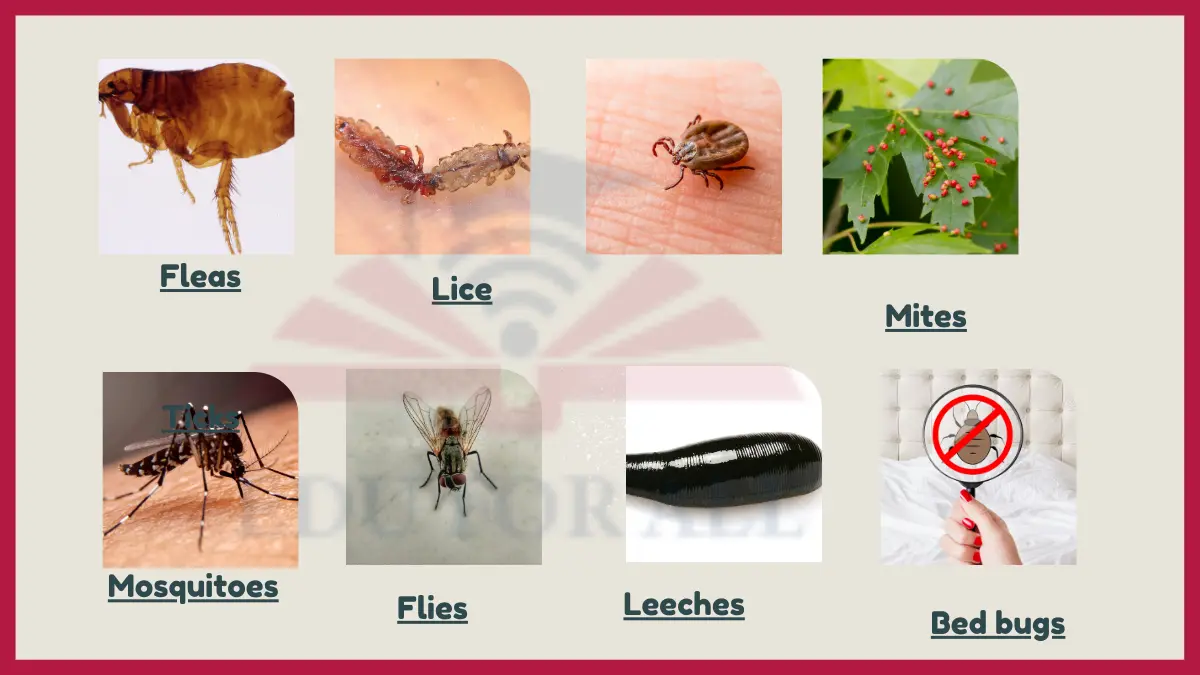Fleas, ticks, lice, mites, bed bugs, maggots, and leeches are a few examples of Ectoparasites.

Examples of Ectoparasites
Here are a few examples of Ectoparasites:
1. Fleas
Fleas are one of the most common ectoparasite that lives on body f host. They are small, wingless insects that live on the blood of mammals. They are the most common type of Ectoparasites in the world. They can infest a variety of animals, including dogs, cats, rabbits, and humans. Flea bites can cause itching, redness, and swelling, and they can also transmit diseases, such as Lyme disease and typhus.
2. Lice
Lice are common known ectoparasites. They are tiny, wingless insects that live on the hair and skin of humans and other animals. There are three main types of lice that infect humans: head lice, body lice, and pubic lice. Lice bites can cause itching and redness, and they can also transmit diseases, such as typhus and relapsing fever.
3. Ticks
Ticks are arachnids that live on the blood of mammals. They are found all over the world, and they can infest a variety of animals, including dogs, cats, deer, and humans. Tick bites can cause itching and redness, and they can also transmit diseases, such as Lyme disease, Rocky Mountain spotted fever, and tularemia.
4. Mites
Mites are tiny arachnids that live on a variety of hosts, including humans, animals, and plants. There are many different types of mites, and some of them can cause diseases in humans, such as scabies, chiggers, and Lyme disease.
5. Bed bugs
Bed bugs are small, wingless insects that live on the blood of humans and other animals. They are most active at night, and they bite people while they are sleeping. Bed bug bites can cause itching, redness, and swelling.
6. Mosquitoes
Mosquitoes are small ectoparasites. They are flying insects that feeds on blood of mammals and birds. They are found all over the world, and they can transmit a variety of diseases, including malaria, yellow fever, and dengue fever.
7. Flies
Flies are small, flying insects that are found all over the world. There are many different types of flies, and some of them can cause diseases in humans, such as houseflies, tsetse flies, and sand flies.
8. Leeches
Leeches are segmented worms that live in water and on land. They have suckers at both ends of their bodies, which they use to attach to their hosts and suck their blood. Leeches are found all over the world, and they can transmit a variety of diseases, such as tularemia and filariasis.

